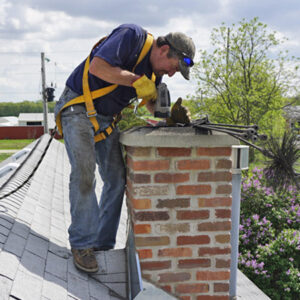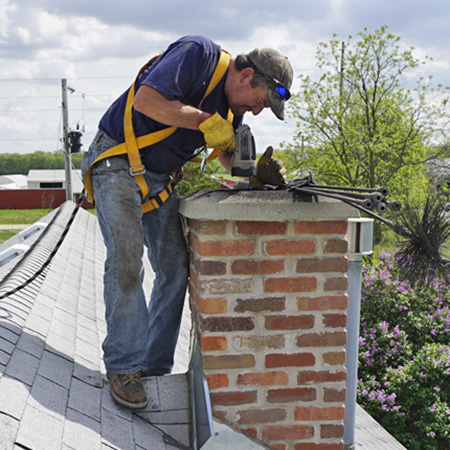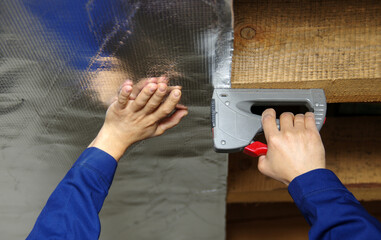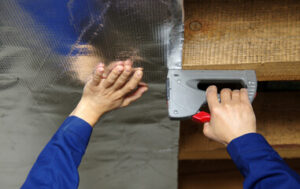Chimneys are often neglected, but a chimney inspection is essential for your home’s safety. Whether your home uses wood-burning fireplaces, gas fireplaces, or a heat pump, an annual Chimney Inspection Charleston SC is needed.
A Level 2 inspection examines all of the readily accessible parts of your chimney, including attics, crawl spaces, and basements. It also checks for proper clearances from combustibles in accessible locations.
The fires inside your fireplace or wood stove produce unwanted byproducts that make their way up the chimney, cooling and solidifying as they travel. These chemical byproducts are called creosote, and they are flammable and a leading cause of chimney fires. When they catch fire, they can spread to the roof and other parts of your house. They can also release toxic gases into your home. The National Fire Protection Association (NFPA) recommends having a chimney inspected and cleaned regularly to prevent dangerous creosote buildup.
Creosote is a black, tar-like substance that can be found in the flue of your chimney. It can appear in three different stages, and each one is more hazardous than the previous. The first stage is flaky and looks similar to soot. This stage can be easily removed during a routine chimney sweep using a basic chimney brush.
A second-degree creosote has a spongy texture and is harder to remove than the first. It can be removed with a special tool, but it’s still important to hire a professional. A chimney with a second-degree creosote buildup is more prone to chimney fires than one with a first-degree buildup because it restricts air flow and reduces draft.
Chimneys that are insulated can help prevent a large buildup of second-degree creosote by allowing the warm air to circulate better. A chimney with an oversized flue can also lead to the buildup of this material because it allows cooler air to pass up and around the fire instead of being vented out.
Third-degree creosote has the appearance of tar and is very thick. It requires a more concentrated effort to remove and is more likely to ignite when it comes into contact with hot chimney surfaces. A chimney that has reached this stage is a serious fire hazard and should be professionally cleaned by a CSIA-certified chimney sweep with specialized tools.
Putting off a chimney inspection and cleaning can lead to serious damage and put your family at risk. There are many signs that it’s time to schedule an appointment, including:
Damage
Over time, smoke and vapors from wood-burning fires will etch away at the brick and mortar of your chimney. This residue, called creosote, is incredibly flammable and can lead to chimney fires, carbon monoxide poisoning, and structural damage. When a CSIA-certified chimney sweep examines your chimney, they will look for any signs of creosote buildup and other issues that could increase the risk of fire or expose your home to harmful fumes.
A Level 1 inspection consists of a check of the readily accessible parts of your fireplace and chimney. This is the right choice if you plan to use your fireplace and chimney as you have in the past, if there’s been no change to your fuel type or to the shape or material of the flue (the space inside the chimney), and if it hasn’t been more than a year since your last chimney inspection.
Chimney fires can cause significant damage to the inside of your chimney and your house, but they’re not always easy to spot. In fact, a chimney fire can leave behind so much debris and heat that it can actually melt the mortar and drywall of your home. This is why it’s so important to have a professional chimney sweep inspect your chimney on a regular basis.
During a Level 2 chimney inspection, your inspector will also scan the internal surfaces of your chimney using a video camera to check for any signs of damage. A Level 2 inspection is usually required if you’ve made any changes to your fireplace or chimney, if you’re selling your home, or if the chimney was damaged by a natural disaster or operation malfunction.
If you’re unsure of when your chimney was last inspected, contact us today to schedule an appointment with a professional. Keeping up with regular chimney inspections can help you avoid costly repairs and save you money in the long run by preventing damage and making sure your fireplace is safe to use. In addition, many homeowner’s policies require that you get your chimney inspected on a regular basis to cover any damages caused by the use of a fireplace or wood-burning stove.
Debris
Over time, the flammable residue of wood-burning fires, known as creosote, builds up inside the chimney. This is one of the main reasons why it is important to have a professional CSIA-certified chimney sweep clean your chimney system regularly. When the creosote buildup gets too thick, it can lead to a chimney fire, which is dangerous and can cause combustible materials to erupt out of your fireplace. If a chimney fire does occur, it can cause serious damage and poisonous gases, such as carbon monoxide, to back up into your living spaces.
Debris falling from the fireplace is a common concern among homeowners, and it may cause some to worry that their chimney is in danger of collapsing. However, this debris does not always mean it is time for a chimney sweep or that there is any kind of structural problem. In many cases, the falling debris is simply parging, which is old, dry cement that was used to line the chimney when it was built, and it can break apart as the chimney ages.
Other types of debris that are often found in chimneys include bird droppings, squirrel nests, and a variety of leaves, branches, fruits, and nuts from nearby trees. In addition, animal debris can also be a problem, as squirrels, rats, mice, and birds love to build their nests in chimneys, and some of them even make their way down the flue. Unfortunately, these critters can end up getting stuck in the chimney and being unable to get out, which is a major safety concern.
If the chimney is full of debris, it can also obstruct drafting, which is another big problem. This means that smoke and dangerous exhaust fumes, such as carbon monoxide, are being sent into the living spaces rather than being vented outside. A chimney that is blocked with debris will also be a serious fire hazard and can put your family in danger.
Safety
Chimneys are made of porous masonry, which can expand and contract when exposed to heat and cold. When this happens, cracks can form that allow combustible materials like creosote and debris to escape the chimney. These substances can then burn, melt, or fall into a fireplace or home, posing fire and health hazards for your family. An inspection can identify these problems and repair them before they become serious.
A professional chimney sweep will examine the interior and exterior portions of your chimney as well as the flue, appliance connections, and combustible deposits. They’ll look for any signs of deterioration, damage, or blockages. For example, if you see small pieces of brick on the damper or fireplace floor, this is a sign that the chimney passageway is crumbling and needs repairs. This deterioration can also leave you open to dangerous exhaust leaks, which will enter your home through the firebox or flue.
Over time, creosote can degrade metal flue liners and crack the chimney itself. These problems can increase your risk of chimney fires and carbon monoxide poisoning. If left unchecked, they can be very costly to repair or replace.
Having a professional chimney inspection can help you reduce the risk of chimney fires and carbon monoxide poisoning, but there are other safety precautions you should take as well. Install smoke and carbon monoxide detectors on every level of your home, especially near bedrooms. Make sure that all doors and windows are open when burning a fire, and always use caution when using a power generator indoors or operating space heaters.
Regardless of how often you use your fireplace, having a chimney inspection at least once a year is essential. If you don’t know when your chimney was last inspected, or if it has never been inspected, now is the time to schedule one. It’s far safer than putting off an inspection until it’s too late. Remember, nearly 18,000 chimney fires are reported each year, and many of them could have been prevented with a routine chimney inspection and cleaning. So don’t delay; call today to schedule your chimney inspection.


 Radiation barrier foil is designed to reflect radiant heat while providing strength and durability. Unlike conventional insulation products, radiant barrier foil does not compress when handled.
Radiation barrier foil is designed to reflect radiant heat while providing strength and durability. Unlike conventional insulation products, radiant barrier foil does not compress when handled.